Text
Working of Vacuum Casting and Its Multiple Uses
To make complicated components, a liquid substance is sucked into a silicone mold under vacuum. This method is known as vacuum casting. Rubber and plastic are examples of elastomers that are utilized as liquid materials in vacuum casting.
Since polyurethane resin, a kind of elastomer is employed as the casting medium, vacuum casting is also frequently referred to as polyurethane casting or urethane casting. When producing plastic components, vacuum casting is a more cost-effective method than injection molding because of its reduced manufacturing costs.
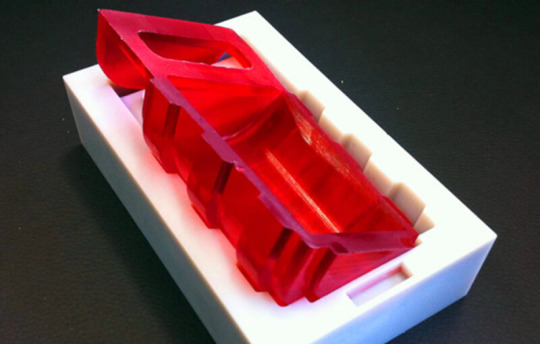
For batch manufacturing and other low-volume production tasks, vacuum casting is a great method of production. Vacuum casting is widely utilized in India's manufacturing of industrial electronics, FMCG, and consumer goods.
How do you work with vacuum casting?
Injection molding, in which cast material is poured into molds to create items, and vacuum casting services are very comparable processes. The kinds of molds used in injection molding and vacuum casting differ from one another.
Molds for injection molding might be formed of steel, aluminum, or other materials. Silicone molds are utilized in vacuum casting, nevertheless. This significantly lowers the mold-making cost because silicone is more affordable and has better durability.
Polyurethane is the most often utilized casting material in this procedure. The qualities of various polyurethanes vary, including good shock and temperature resistance, elasticity, flexibility, and structural stiffness. Thus, different polyurethanes may be employed depending on the kind of product being created.
Vacuum casting uses
Making complicated and sophisticated goods may be accomplished more cost-effectively and efficiently with vacuum casting as opposed to the conventional injection molding method.
Due to its efficient production process, vacuum casting finds widespread application in the fabrication of commercial items. The following are a few industries that employ vacuum casting:
Manufacturing of consumer goods
Vacuum casting is a more effective method of producing consumer goods including combs, hair brushes, makeup packaging, sunglasses, pens, and other stationery.
Industry of Food and Beverages
Vacuum casting is used to create food and beverage containers, bottles, cans, mugs, and glasses. Due to the process's great efficiency and ability to produce goods quickly, vacuum casting is widely utilized in various industries where rapid manufacture is essential.
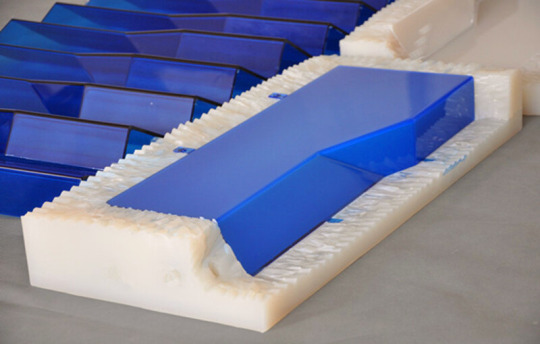
Advanced industry
Excellent heat and shock resistance is a feature of polyurethanes. Therefore, the recommended production procedure for creating electrical device housings is vacuum casting by Vacuum Casting Manufacturer using polyurethanes.
Follow our Facebook and Twitter for more information about our product.
#vacuum casting#vacuum casting services#Explore vacuum casting#Vacuum Casting Services China#Vacuum Casting Manufacturer#Vacuum Casting supplier
1 note
·
View note
Text
Various Types of Metals Used in Sheet Metal Fabrication
The process of cutting, bending, punching, and welding thin, flat metal sheets into different forms is known as sheet metal fabrication. Sheet metal fabrication is a process used to form and configure various metals, including aluminum, titanium, steel, copper, tin, brass, and steel. Silver, gold, and platinum are good ornamental metals. Many different things with differing thicknesses are made…
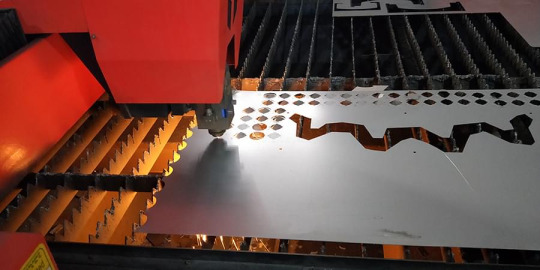
View On WordPress
#Online Sheet Metal Fabrication#Sheet Metal Fabrication#Sheet Metal Fabrication Process#Sheet Metal Fabrication services#Sheet Metal Fabrication Techniques
0 notes
Text
A Basic Overview About CNC Turning
The technology provided by CNC turning services is often used to create cylindrical pieces out of different materials. CNC Lathe Turning, in contrast to CNC milling, involves rotating the workpiece while introducing a stationary tool into it. To create very complicated pieces, advanced CNC turning centers go one step further and incorporate cutting capabilities into the machine.
The technique of…

View On WordPress
#CNC Lathe Turning#CNC Lathe Turning China#CNC Lathe Turning manufacturer#CNC Lathe Turning process#CNC Lathe Turning supplier
0 notes
Text
Know About the Post-Processing in Rapid Prototyping
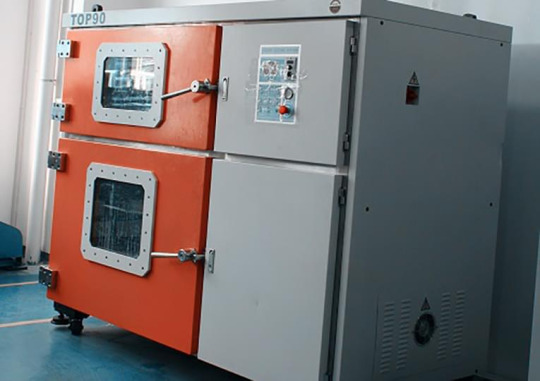
Rapid Prototyping China is a ray of efficiency and inventiveness in the field of product development and innovation. By offering quick iterations and concrete concept representations, it transforms conventional methodologies. However, inside this miracle of contemporary engineering, there is a critical—often disregarded but unquestionably necessary—step called post-processing. It's the period of transformation that unlocks the actual potential of a rough prototype and turns it into a polished masterpiece.
Enhancement of Visual Appeal
Even in the world of prototypes, first impressions count. Post-processing makes it possible to improve the visual appeal of a prototype by removing flaws and rounding off edges. Simple models may be transformed into visually beautiful representations by using techniques like painting, polishing, or sanding, which can improve the model's aesthetic appeal and professionalism.
The perception of a product is greatly influenced by its aesthetics, which also affects consumer acceptability and engagement. Consequently, spending money on post-processing guarantees that prototypes not only work effectively but also grab attention due to their striking appearance.
Improvement of Material
Chinese Rapid Prototyping Services relies heavily on material selection, which affects characteristics like strength, flexibility, and durability. Nevertheless, the intrinsic qualities of raw materials could not meet the required standards. A solution is provided by post-processing, which enhances material qualities to satisfy demands. One can achieve desired characteristics like heat resistance, conductivity, or waterproofing by applying coatings, surface treatments, or chemical procedures. Post-processing broadens the possibilities by improving material qualities, making prototypes more resilient to real-world use and more environment-adaptable.
Individualization and Tailoring
Each product is different from the others and meets the demands of different users. Post-processing makes it easier to customize and personalize prototypes to suit these unique tastes. Prototypes may be given individuality and flare by post-processing, which includes adding textures, engravings, and detailed detailing. It also makes it possible to incorporate branding components, which promote brand loyalty and awareness.
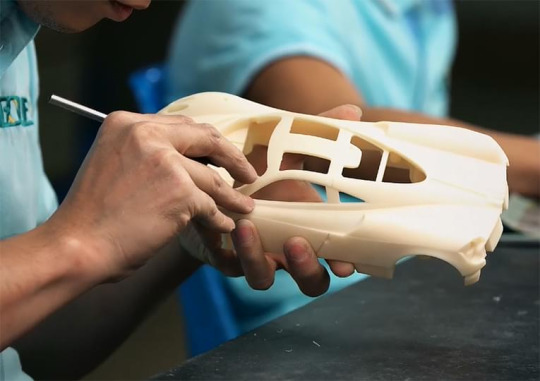
Iterative Enhancement
Iteration is the lifeblood of Rapid Prototype; each cycle improves and refines the idea. Post-processing provides insightful input for iteration cycles, acting as a stimulus for iterative progress. Designers can identify areas for improvement and identify strengths and shortcomings by evaluating post-processed prototypes. Prototypes are refined through iterative development, which encourages ongoing learning and innovation.
#Rapid Prototyping China#Rapid prototyping Supplier#Rapid prototyping manufacturer#Chinese Rapid Prototyping Services
1 note
·
View note
Text
The Importance of High-tech Rapid Prototyping
In the industrial industry, precision is not only desirable—it is essential. Consider a situation in which parts of a jet engine are even marginally machined incorrectly or misaligned. The repercussions can be disastrous and might cause the engine to fail in midair. Precision becomes the key to success in sectors like aerospace, automotive, and medical where safety and dependability are non-negotiable. Put simply, it's the capacity to manufacture parts or components that precisely conform to given dimensions, tolerances, and quality requirements. It takes state-of-the-art equipment, painstaking attention to detail, and highly competent operators to achieve this degree of accuracy. This is the sweet spot for Precision CNC Machining.
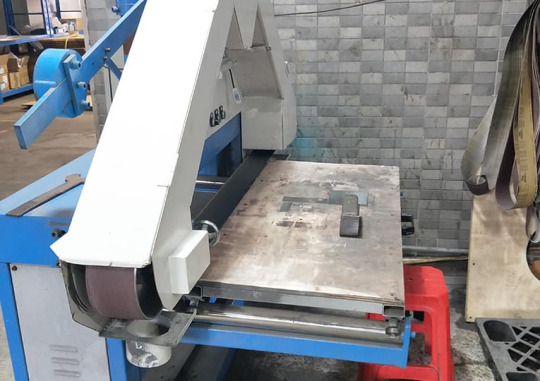
So how precisely can CNC machining accomplish such high precision levels?
Computerized Control: Advanced computer software is the brains of CNC machining, translating digital design requirements into exact motions and orders for the milling tools. This removes the possibility of human error and guarantees the highest level of precision in each cut, drill, and mill.
Superior Quality Equipment: Modern spindles, tools, and cutting implements that are designed to provide exact results are standard on CNC machines. These devices may operate at extremely tight tolerances, which are sometimes expressed in microns, guaranteeing an accurate reproduction of even the minutest features.
Consistency: The ability of CNC machining and High-tech Rapid Prototyping to manufacture similar components with little variance is one of its main advantages. A machine program that has been developed and tuned may be repeated endlessly with reliable outcomes. In fields where stability and dependability are critical, this degree of constancy is priceless.
Advanced Techniques: Multi-axis milling, turning, EDM (Electrical Discharge Machining), laser cutting, and other state-of-the-art methods are all included in CNC machining. With unmatched accuracy and efficiency, manufacturers can handle complicated geometries and materials thanks to these procedures.
Quality Assurance: CNC systems frequently include integrated quality control mechanisms including automated inspections, feedback loops, and real-time monitoring in addition to accurate machining. This reduces waste and rework by guaranteeing that any deviations from the intended standards are quickly identified and fixed. It is impossible to exaggerate the value of accuracy in production. Precision by Precision CNC Machining Manufacturer plays a crucial role in today's competitive economy, as it ensures everything from satisfying regulatory requirements and consumer expectations to assuring product performance and dependability.
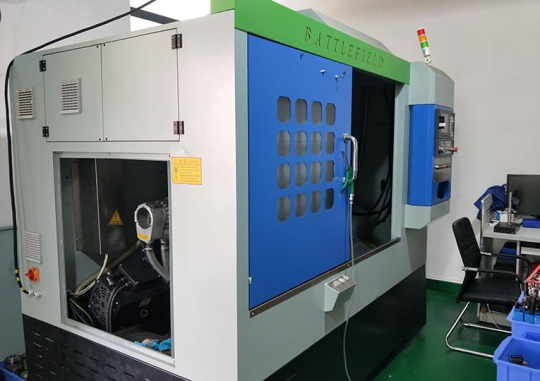
Follow our Facebook and Twitter for more information about our product
#High-tech Rapid Prototyping#Precision CNC Machining#Precision CNC Machining Manufacturer#CNC Machining Manufacturer Company
1 note
·
View note
Text
Three Crucial Controlling Aspects of Die Casting
In the industrial industry, control and accuracy are critical. This is never more apparent than in Die Casting, a procedure that needs precise specifications to reliably and effectively create high-quality parts. The three essential components of control—injection speed, temperature, and pressure—are at the center of this undertaking. These three variables have a significant impact on die-casting…
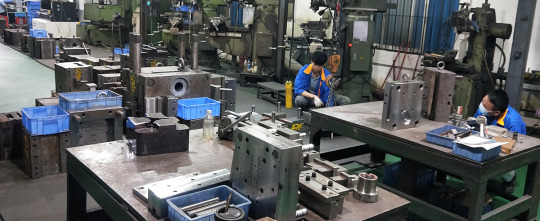
View On WordPress
0 notes
Text
Learn About the Basics of Vacuum casting
Within the dynamic realm of production and prototyping, urethane casting is a unique technology that provides cost-effectiveness, accuracy, and diversity. Urethane casting has become the industry standard for a variety of applications, from complex prototypes to small-batch production runs, including consumer electronics, medical equipment, and the automotive and aerospace sectors.
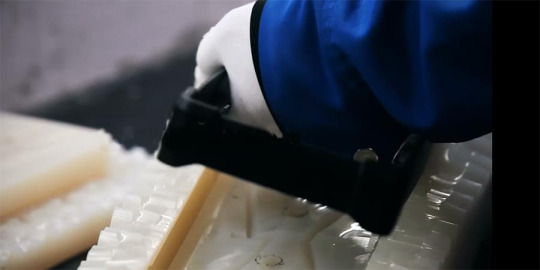
Gratitude Casting of Urethane
The first step in the procedure is to create a master pattern, which is usually done via fast prototyping techniques like CNC machining or 3D printing. The silicone molds that are made from this master pattern are used to pour polyurethane resin into. The resin mimics the fine features of the master design once it has dried, producing pieces that are excellent and ready for manufacturing.
Flexibility throughout Sectors
The adaptability of urethane casting across sectors is one of its most noteworthy benefits. Urethane casting may be used for a variety of purposes, including the production of end-use components and prototypes for new product development. For instance, urethane casting makes it possible to quickly iterate ideas for dashboard panels, interior trim, and lighting fixtures in the car industry. Similar to this, urethane casting makes it easier and faster to produce unique medical device housings, surgical instruments, and prosthetic components in the medical profession. Vacuum casting also offers flexibility.
Benefits Compared to Conventional Approaches
When compared to conventional production techniques like CNC machining and injection molding, urethane casting has several significant benefits. The most important factor is cost-effectiveness. Because urethane casting requires less tooling up front, it's a great option for low-volume production runs if standard tooling costs are too high. Urethane casting also has a short turnaround time, which enables companies to quickly develop and refine ideas without having to wait for long lead periods.

Additionally, the design freedom provided by urethane casting makes it feasible to produce intricate surface details, undercuts, and complicated geometries that would be difficult or impossible to accomplish with alternative manufacturing processes. This versatility also applies to the choice of material, since a variety of polyurethane resins are available to satisfy certain performance needs, including those related to hardness, flexibility, and chemical resistance. You can Explore vacuum casting also.
Follow our Facebook and Twitter for more information about our product.
#vacuum casting#vacuum casting services#Urethane Casting#Explore vacuum casting#Custom Vacuum Casting Services
1 note
·
View note
Text
Exploring the Depth of Sheet Metal Fabrication
A vital component of contemporary manufacturing, sheet metal fabrication serves a variety of sectors, including electronics, automotive, aerospace, and construction. It’s a multidimensional craft where thin metal sheets are shaped and worked into different parts and structures.
The Craft of Molding
Forming is the art at the core of sheet metal manufacture. To create the appropriate shapes and…

View On WordPress
#Online Sheet Metal Fabrication#Sheet Metal Fabrication#Sheet Metal Fabrication Process#Sheet Metal Fabrication services#Sheet Metal Fabrication Techniques
0 notes
Text
CNC Lathe Turning Enhances Manufacturing Precision
In CNC lathe turning, a workpiece is rotated as a cutting tool removes material to form cylindrical forms. This is a subtractive manufacturing process. Traditional lathe turning differs from CNC lathe turning primarily in the automation and accuracy provided by computer-controlled equipment.
Important Parts and Features
A CNC lathe is made up of several vital parts, each of which is vital to…
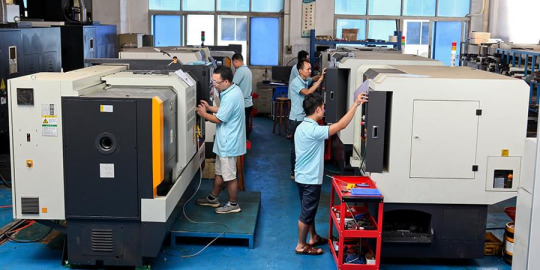
View On WordPress
#CNC Lathe Turning#CNC Lathe Turning China#CNC Lathe Turning manufacturer#CNC Lathe Turning process#CNC Lathe Turning supplier
0 notes
Text
The Potential of High-Tech Rapid Prototyping
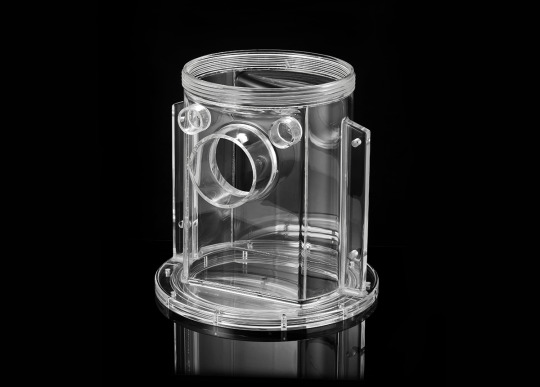
High-tech Rapid Prototyping has become a game-changer in the rapidly changing fields of innovation and technology, altering the way things are planned, developed, and introduced to the market. This dynamic process, which promotes creativity, shortens time-to-market, and ultimately drives unmatched innovation, has emerged as a key component for companies looking to maintain their leadership positions in their respective fields.
The Innovation-Promoting Technologies
The 3D Printing Process
3D printing is a key component of the fast prototyping revolution because it allows digital models to be layered into actual items. This technology has made it easier to produce intricate, personalized prototypes and greatly reduced design cycles.
Machining using computer numerical control (CNC)
Prototypes made of different materials may be accurately cut, shaped, and assembled with the help of computer-controlled gear thanks to CNC machining from CNC Machining Manufacturer. This adaptable technique works especially well for creating prototypes with intricate geometries and great accuracy.
Using Injection Molding
Rapid prototyping is greatly aided by injection molding, a process that is frequently employed in mass manufacturing. The appearance, feel, and functioning of the final product are accurately represented by injection-molded prototypes.
Benefits of Rapid High-Tech Prototyping
Quicker Iterations in Design
Design revisions may be completed quickly and affordably using rapid prototyping. Instead of weeks or months, designers may test several iterations of a product, improve functionality, and fix bugs in a matter of days.
Economy of Cost
High-tech fast prototyping decreases the upfront expenses associated with traditional manufacturing methods by eliminating the need for expensive equipment and molds. This makes it possible for companies to test concepts more affordably before committing to large-scale manufacturing.
Improved Cooperation
Improved cross-functional team communication is facilitated by prototyping. A prototype may be physically interacted with by stakeholders, who can offer insightful input and encourage cooperation between end users, engineers, and designers.

Sensitivity to the Market
Being able to react swiftly to customer input and industry developments is critical in businesses that move quickly. Businesses may maintain their agility, adjust to shifting customer needs, and obtain a competitive advantage in the market by using high-tech fast prototyping and Precision CNC Machining.
Follow our Facebook and Twitter for more information about our product.
#High-tech Rapid Prototyping#Precision CNC Machining#Precision CNC Machining Manufacturer#CNC Machining Manufacturer Company#Precision CNC Machining Manufacturer Company
1 note
·
View note
Text
Manufacturability Design in Rapid Prototyping
Quickly producing physical models or prototypes with additive manufacturing technologies like 3D printing, CNC machining, or other sophisticated fabrication techniques is known as Rapid Prototyping China. With this method, designers may test their ideas, evaluate functionality, and spot problems in their designs early on, which cuts down on development expenses and time-to-market.
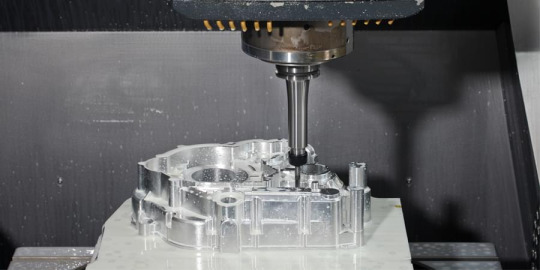
Manufacturability-focused design (DFM)
DFM is a collection of best practices and standards for improving a product's design so that it can be manufactured more easily. DFM concepts are as important at the rapid prototyping stage, even though they are typically linked with mass production. Engineers may minimize problems and streamline the prototype process by taking manufacturing restrictions into account early in the design phase.
Essential DFM Takeaways for Quick Prototyping
Material Choice
Select materials that work well with the quick prototyping method you've chosen.
Depending on the planned use, take into account the material's strength, flexibility, and heat resistance.
Complexity of Geometry
Simplify designs to save money and time during manufacture.
Reduce overhangs and complex features, which might be difficult to create using some fast prototyping techniques.
Accuracy and Tolerance
Recognize the dimensional accuracy constraints of the fast Rapid Prototype technique that you have selected.
To guarantee the required precision in the finished prototype, design with the proper tolerances.
Assisting Frameworks
To avoid deformations during fabrication, especially in 3D printing, take into account the essential support structures in the design.
Reduce post-processing work and material waste by optimizing support structures.
Assembly Considerations
Create components that are simple to test and dismantle for adjustments.
When it's feasible, reduce the amount of components to expedite the prototype process.
Time Efficiency Gains from Using DFM in Rapid Prototyping
Designers may expedite the whole prototype phase by avoiding several revisions and delays by addressing manufacturability problems early on.
Lowering of Expenses
During the fast prototype stage, optimal design decisions result in cost savings through effective material consumption and less waste.
Better Cycles of Iterations
Faster design iterations are made possible by the prompt discovery and resolution of manufacturability difficulties, which enable more extensive testing and refinement.
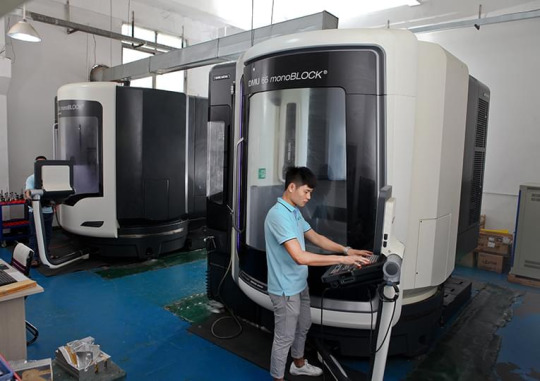
Improved Prototyping Caliber
By keeping DFM principles in mind, you may minimize unforeseen difficulties during testing and validation by ensuring that the final Rapid prototyping manufacturer closely resembles the planned design.
#Rapid prototyping manufacturer#Rapid Prototype#Rapid Prototyping Services#Metal Rapid Prototyping Services#Rapid prototyping Supplier#Rapid Prototyping China#Chinese Rapid Prototyping Services
1 note
·
View note
Text
Revolutionizing Manufacturing: The Marvels of Die Casting
Technological developments are crucial in the ever-changing industrial scene because they shape industries and optimize production processes. The die casting machine is one such invention that has had a big influence on the industrial industry. This incredible piece of machinery, which offers efficiency, accuracy, and affordability, has completely changed the way metal components are made.
Die…

View On WordPress
#Die Casting#Die Casting China#Die Casting Manufacturer#Die Casting Process#Die Casting Services#Die Casting Supplier
0 notes
Text
Exploring the Art and Science of Vacuum Casting
A vacuum is used in the vacuum casting process to force molten metal into a mold. When working with sophisticated designs and small-scale manufacturing runs, this method is quite helpful. In contrast to conventional casting techniques, vacuum casting provides unmatched accuracy and consistency.
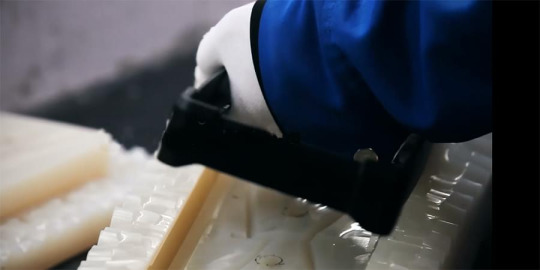
Overview of the Process
Master Model Development: The first step in the procedure is to create a master model, which is usually made of a variety of materials including silicone, foam, or wax.
Making the Mold: After that, a silicone mold is made around the master model. Several duplicates of the original model will subsequently be made using this mold.
Vacuum Casting Chamber: Air and other gases are extracted from the mold cavity by placing the mold within a vacuum casting chamber.
Metal Injection: In a vacuum, molten metal is injected into the mold. High-quality, intricate reproductions are produced by making sure that the metal fills every nook and corner of the mold thanks to the vacuum.
Cooling and Solidification: The metal is left to cool and solidify in the mold once it has been filled. To give the finished product the necessary qualities, this process is essential.
Mold Separation: The cast portion is then visible once the mold is detached. For more casting cycles, the mold can be utilized.
Applications for Vacuum Casting
Prototyping: During the product development process, vacuum casting is frequently employed. It enables engineers and designers to swiftly generate several versions of a design for assessment and testing.
Small-Scale Production: Vacuum casting services China is an affordable option for small production runs, particularly for complex and detailed components.
Medical Models: Anatomical models are made in the medical industry via vacuum casting for planning surgeries and teaching reasons.
Automobile Components: Vacuum casting increases the productivity of small-scale production and prototyping of specialized vehicle components.
The benefits of vacuum casting
Precision: Vacuum casting is perfect for creating complicated pieces because it can reproduce fine features with extreme precision.
Material Versatility: The vacuum casting technique may be utilized with a broad range of materials, including elastomers and different metals.
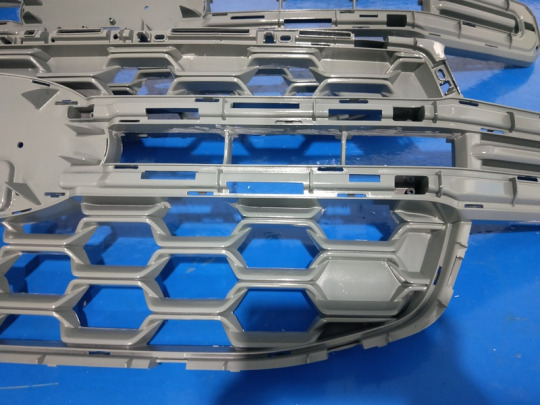
Cost-Effectiveness: For small to medium production runs, vacuum casting by vacuum casting manufacturer is frequently more economical than traditional manufacturing techniques.
Fast Turnaround: The vacuum casting process's quick prototyping capabilities enable a speedy transition from design to real prototype.
0 notes
Text
Know About the Science of Sheet Metal Fabrication
The process of transforming flat metal sheets into beautiful and useful structures is called sheet metal fabrication, and it involves a complex tango between creativity and precision engineering. For decades, the core of manufacturing has been this dynamic process, which has developed in tandem with advances in design and technology. The history of sheet metal manufacture began in antiquity when…

View On WordPress
#Online Sheet Metal Fabrication#Sheet Metal Fabrication#Sheet Metal Fabrication Companies#Sheet Metal Fabrication services#Sheet Metal Fabrication Techniques
0 notes
Text
A Comprehensive Guide to Types and Applications CNC Lathe Machines
The purpose of CNC lathe turning machines is to carry out turning operations, which entail removing material from a workpiece to make cylindrical forms. These devices automate the cutting process with the help of computer-controlled systems, improving repeatability and precision.
CNC Lathe Machine Types
2-Axis CNC lathe
It is perfect for basic turning tasks.
Functions on the X and Z…

View On WordPress
#CNC Lathe Turning#CNC Lathe Turning China#CNC Lathe Turning manufacturer#CNC Lathe Turning process#CNC Lathe Turning supplier
0 notes
Text
Rapid Prototyping Services Revolutionizes Innovation
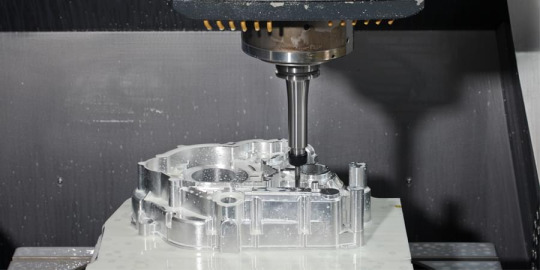
Rapid prototyping is a process that uses three-dimensional computer-aided design (CAD) data to quickly produce a scale replica of a physical item or assembly. The intention is to provide engineers and designers the opportunity to assess a design's shape, fit, and functionality before mass production. The procedure allows for rapid prototype, which cuts down on the development cycle's duration and expense.
Important Elements of Services for Rapid Prototyping
3D Manufacturing
3D printing is one of the most popular methods for fast prototyping. It entails the layer-by-layer deposition of material from a computer design to produce a tangible item. The versatility of materials, such as metals, ceramics, and plastics, allows for the flexible prototyping of a wide range of items.
CNC Machining: CNC machining is a type of subtractive manufacturing in which a machine tool controlled by a computer removes material from a solid block to mold it into the desired shape. Prototypes may be made with this technique using a variety of materials, including metals and polymers.
Molding by Injection
High-volume prototypes are produced by the rapid prototyping manufacturer using injection molding. The prototype is created by pouring molten material into a mold cavity, where it hardens. Larger production runs result in lower per-unit costs, notwithstanding the greater initial tooling cost.
Advantages of Services for Rapid Prototyping
Accelerated Product Development: From concept to final design, the time it takes to produce a product is greatly decreased by rapid prototyping. Businesses can gain a competitive edge by bringing items to market faster because of this speed.
Savings: When adjustments are needed, traditional prototyping techniques may be costly. Quick modifications are made possible by rapid prototyping, which lowers tooling costs and development costs overall.
Iterative Design Process: An iterative design process is supported by the capacity to swiftly create and test prototypes. Designers can quickly retest, make changes, and get feedback, which results in a better and more optimized final product.

Customization & Complexity: Using Chinese rapid prototyping services makes it feasible to produce extremely intricate and personalized designs that would be difficult or impossible to produce using conventional manufacturing techniques. In sectors including consumer electronics, healthcare, and aerospace, this capacity is very useful.
#Chinese Rapid Prototyping Services#Rapid Prototyping China#Rapid prototyping Supplier#Rapid prototyping manufacturer#Rapid Prototype
3 notes
·
View notes
Text
Quality Control and Process Monitoring in Die Casting
Die casting is a flexible and effective manufacturing technique used in many different sectors to produce intricate and superior metal parts. Manufacturers depend on strict quality control and process monitoring to guarantee the creation of perfect parts. We will examine the crucial facets of process monitoring and quality control in die casting in this blog article, as well as how these procedures affect the manufacturing process's overall performance.

The significance of process observation
Temperature Control: For die casting, maintaining accurate temperatures is essential. Deviations may have an impact on the end product's overall quality as well as the metal's flow and solidification.
To maintain uniformity and lower the possibility of faults, sophisticated monitoring systems continually measure and modify temperatures.
Pressure Monitoring: To adequately fill the mold, die casting requires high pressure. It's crucial to keep an eye on pressure throughout the injection phase to avoid problems like excessive porosity or incomplete filling.
Instantaneous input is provided by real-time pressure sensors, which enables modifications to enhance the casting process.
Cycle Time Optimization: Efficiency depends on keeping an eye on how long each casting cycle lasts. Finding places where cycle durations may be shortened without sacrificing quality is made easier by process monitoring.
Reduced cycle times increase overall cost-effectiveness and productivity while also conserving energy.
Measures for Quality Control
In-Process Inspection: Throughout the die casting services, routine inspections aid in spotting any variations from the intended specifications.
Automated vision systems and sensors are capable of identifying inclusions, surface imperfections, and dimensional errors, guaranteeing that only superior products proceed through the manufacturing process.
X-ray and Ultrasonic Testing: Non-destructive testing techniques like X-ray and ultrasonic testing are used for crucial components to find interior flaws such as inclusions and porosity.
These techniques allow for a thorough analysis of the part's integrity without sacrificing its structural qualities.
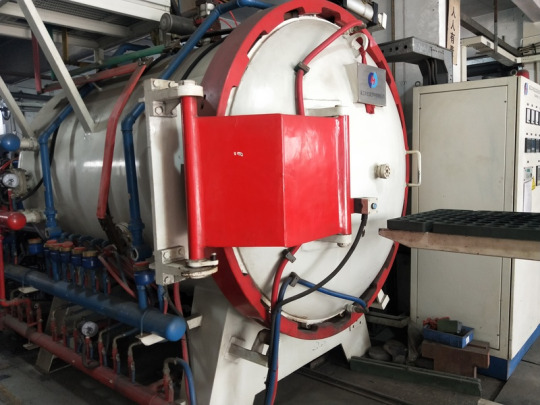
SPC, or statistical process control
SPC entails keeping an eye on and managing the die-casting process via statistical techniques. It assists in seeing patterns, variances, and possible problems before they lead to faulty components.
Die casting supplier may improve overall process stability and product quality by making well-informed decisions based on the analysis of data acquired during production.
Next: 5-axis machining service processing
#Die Casting Services#Die Casting Process#Die Casting Supplier#Die Casting China#Die Casting Manufacturer
1 note
·
View note